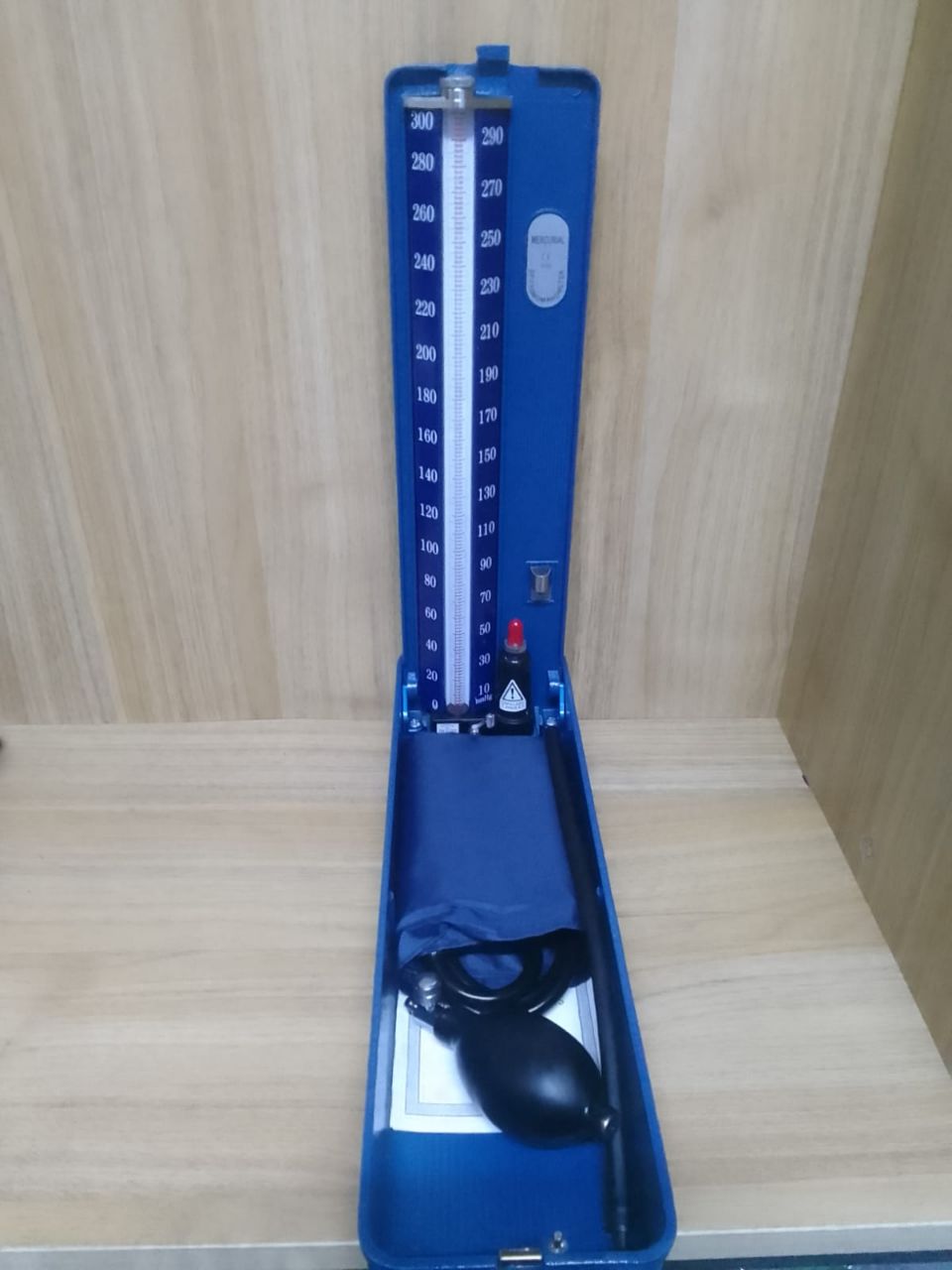A Mercury Sphygmomanometer is a traditional and highly accurate instrument used to measure blood pressure. It consists of a mercury column, an inflatable cuff, a bulb for inflation, and a valve to control deflation. The device operates on the principle of recording the pressure at which blood begins to flow through an artery after the cuff has temporarily occluded the arm’s blood flow.
The sphygmomanometer includes a mercury-filled vertical column, which acts as a pressure indicator. The cuff is wrapped around the patient’s upper arm, and air is pumped into the cuff using a rubber bulb. This inflation temporarily stops the flow of blood in the brachial artery. As the cuff deflates slowly, the healthcare provider uses a stethoscope to listen for Korotkoff sounds—the tapping sounds that occur as blood starts to flow again through the artery. The pressure at which these sounds are first heard indicates the systolic pressure, while the pressure at which the sounds disappear indicates the diastolic pressure.
Despite being largely replaced by digital and aneroid devices in many clinical settings, the mercury sphygmomanometer is still considered the gold standard for its precision and reliability in measuring blood pressure. However, due to environmental concerns regarding mercury, its use is increasingly being phased out in favor of alternative devices.
The mercury sphygmomanometer is essential in diagnosing hypertension and monitoring a patient’s cardiovascular health. Its accuracy makes it particularly valuable in clinical and hospital settings, where precise measurements are crucial.






Reviews
There are no reviews yet.